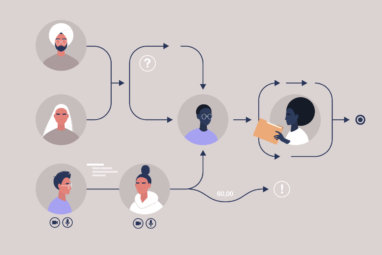
Content Sponsored by Webex by Cisco
The New World of Work Is Transforming the Old Social Contracts
This report, based on a global survey, explores rapidly changing trends in hybrid and remote work.


This report, based on a global survey, explores rapidly changing trends in hybrid and remote work.

Experimental corporate initiatives and individuals’ new ways of working are shaping what’s possible.

Leaders and their employees must partner to achieve equity and access for both in-person and remote employees.

Northeastern University’s Curtis Odom shares ways to develop coaching, mentoring, and sponsorship in today’s workplace.

Allowing employees to work from home now and post-pandemic can benefit those with or without disabilities.

Forces that have been in play since before the pandemic began can help explain today’s turbulence in the workforce.

Space missions’ remote-work lessons, fast fashion’s untenable business model, and sustainable work’s progressive roots.

The practices of astronauts offer a model for successfully adapting to remote and hybrid work.

Coworking benefits for remote teams, sharing value for ecosystem success, and becoming a better workplace ally.

Coworking arrangements might be the ideal choice for employers and employees alike in the wake of the pandemic.

The post-pandemic era requires a leadership mindset change about jobs and managerial expectations.

Strategists weigh in on what relaxed rules around physical presence in the office mean for productivity and performance.

The visibility arising from digital employee monitoring requires purpose, policies, and management.

The collective intelligence of remote teams, synthetic data for machine learning, and delegation to bridge virtual distance.

Remote work can be as effective as in-person work with the right people and collaborative processes.

In the context of remote work, leaders must reconsider conventional delegation methods.

Making better AI-based decisions, empowering remote teams, and building a learning culture to boost innovation.

When remote leaders adopt an empowering leadership style, they are free to think bigger, achieve more, and worry less.

Virtual, tech-mediated collaboration carries risks of isolation, exclusion, surveillance, and self-censorship.

In his new book, Beyond Collaboration Overload, Rob Cross explains how to avoid excessive collaboration while still reaping its benefits.